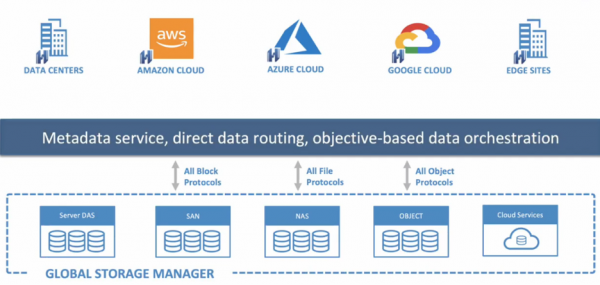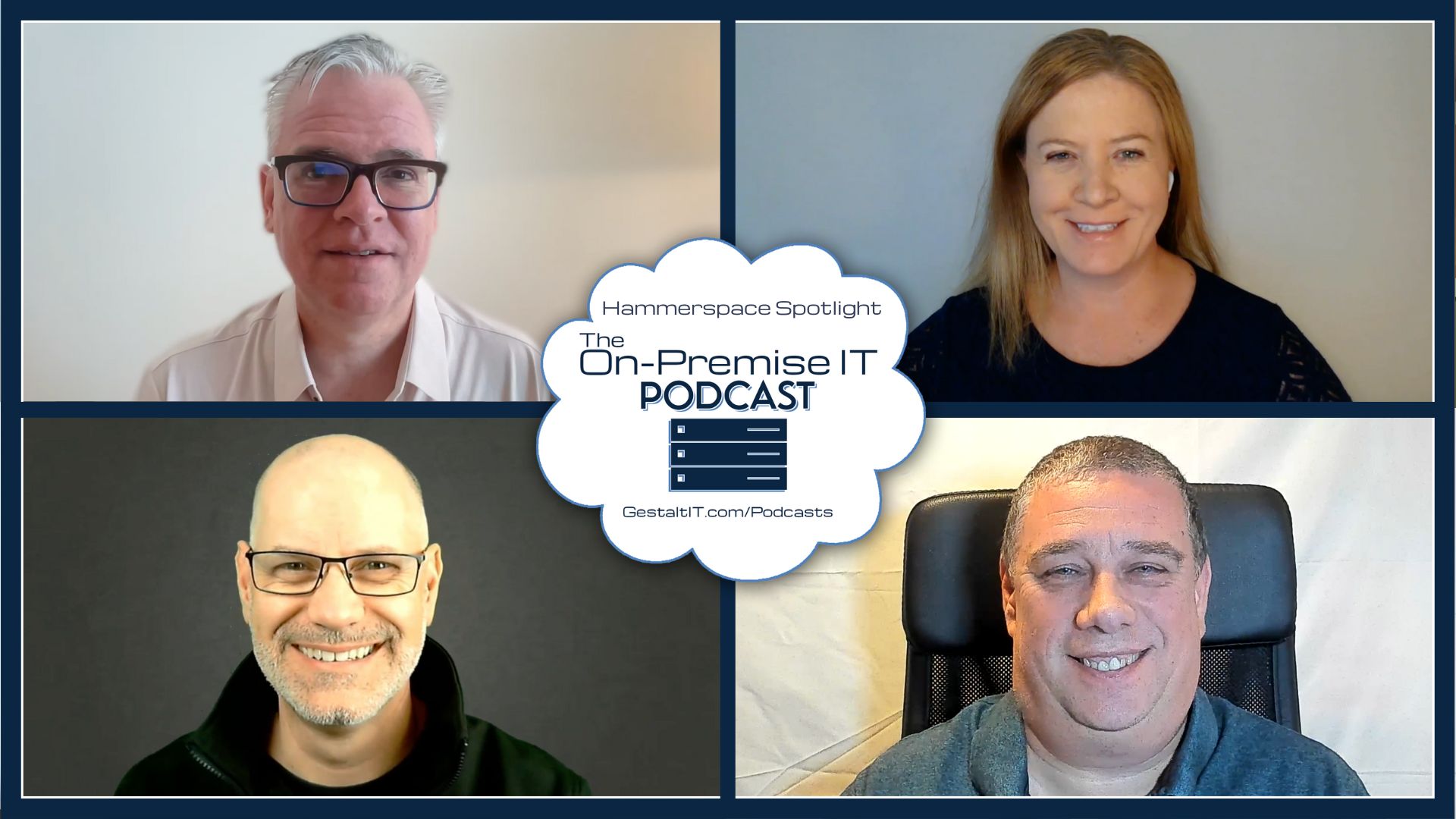Many organizations practice the “use what you got” approach to infrastructure lifecycle management. Older systems live alongside new systems, and everything is different. While this approach lets organizations make the most of their capital investments in Infrastructure, ITOps teams can get stuck with managing the associated operational complexity. At Storage Field Day in January, Hammerspace showcased its self-proclaimed “storageless” data management platform that can simplify and unify the management of these disparate storage systems, whether on-premises or in a public cloud.
The “Everything Is Different” World of On-Premises Infrastructure
An organization’s infrastructure is often a mélange of hardware vendors. Older systems frequently get repurposed, and vendors, systems, and protocols get mixed and matched. IT teams get tasked with managing heterogeneous workloads that span on-premises and in public clouds. Operational complexity often accompanies these disparate workloads.
On the flip side, management of cloud resources is ubiquitous and ultimate commoditization of Infrastructure. Instead of selecting specific hardware vendors, an organization selects consumable resources like compute and storage based on attributes performance and price with no insight or visibility into the underlying hardware. It makes sense that organizations would want to bring this cloud consumption-style on-premises for operational ease and also to empower their developers.
Bringing Self-Service Storage to Ops Teams
At Storage Field Day in January, Hammerspace showcased its self-proclaimed “storageless” data management platform. Storageless data, like its sister term “serverless,” sparks conversations. Both terms have their share of doubters, not over the technology, but the actual term. Let’s leave that discussion for the pedants, though.
Hammerspace has also labeled its data management solution as “Data-as-a-Service.” In its software-based approach to data management, Hammerspace abstracts away storage resources for ease of consumption and management while adding features like global metadata management, orchestration, and automation. Hammerspace strives to enable DevOps and other teams via self-service storage.

Through its Global Storage Manager, Hammerspace unifies multiple storage vendors, and multiple sites, on-premises, or in one of the public clouds. Additionally, NFS, SMB, and S3 protocols are supported. Hammerspace, via a CSI driver, can also act as persistent storage for Kubernetes workloads.
Hammerspace’s independent metadata service acts as a control plane and is a vital part in unifying multiple storage systems and enabling features like fast clones based on moving the metadata and letting the system’s data orchestration and replication policies manage the rest.
Bridging the Storage Gap Between On-Premises and Public Cloud Workloads
Similar to serverless compute, Hammerspace takes a declarative approach to managing storage. By placing service-level objectives (SLOs) or statements of intent-based level of performance, Hammerspace orchestrates the tasks needed to meet the objectives. No storage administrator needs to manage volume moves or the replication needed to achieve the defined SLOs. If an objective cannot be met based on the underlying infrastructure, the system warns the user.
To stitch multiple storage systems spanning multiple sites into a globally managed system, file conflicts are inevitable. Hammerspace takes a “conflict resolution” approach. Sites work independently and are coupled secondly. The local copy of the file is the source of truth, and any additional file versions get created to handle file conflicts. An upside to this conflict resolution approach is that it avoids some of the inherent system complexity that accompanies managing and resolving file locks.
Conclusion
With Hammerspace, organizations can couple together disparate storage systems across multiple sites into a unified platform that brings management and continuity, and can bridge on-premises and public cloud environments with global data management, orchestration, and automation. This solution was designed for orchestration and automation via Rest APIs that an organization needs to manage data at scale. To learn more about Hammerspace’s global data management platform, check out Hammerspace’s presentations at Storage Field Day.




